
What a week it has been, campers! On top of the annoying crutches, the difficult physical therapy, and the seemingly endless series of doctors’ appointments, I seem somehow to have contracted a cold. Can’t imagine how that happened, spending all of that time next to sneezers in medical waiting rooms…
Fortunately, my will to communicate is apparently stronger than my scratchy throat’s ability to inhibit it. Onward and upward!
Before we launch into today’s installment from our long-ago and much-beloved fearedcommented-upon series, Seeing Submissions From the Other Side of the Desk, I must mention: something happened that exactly mirrored one of the attitudes I discuss in this post. I won’t tell you about it up front, though — you’ll appreciate the story much more, I suspect, if I introduce it afterward. Enjoy the anticipation!
We’re almost at the end of our very, very long examination of reasons agents tend to reject a submission on page 1, Can’t you feel the air buzzing with excitement? Haven’t you noticed the bees murmuring in their hives, the birds stopping in mid-air to gape, and every little breeze seeming to whisper, “Louise!” like Maurice Chevalier?
No? Are your dreams still haunted by Millicent the agency screener hovering over your workspace, intoning “Next!” in the same sepulchral tone in which Edgar Allen Poe’s raven purportedly squawked, “Nevermore!” while you try to crank out query letters?
Quite understandable, if so. Facing the truth about just how harsh agents and their screeners can be in their readings — and need to be, in order to thin out the steady barrage of applicants for very, very few client positions available in any given year — requires great bravery.
“True genius,” Winston Churchill told us, “resides in the capacity for evaluation of uncertain, hazardous, and conflicting information.” You can say that again, Win.
At first, it’s can be easier to keep cranking out those queries and submissions if a writer isn’t aware of the withering gaze to which the average submission is subjected. The pervasive twin beliefs that all that matters in a submission is the quality of the writing and that if an agent asks for a full manuscript, s/he is actually going to read the entire thing before making up his or her mind has buoyed many a submitter through months of waiting for a response.
Be proud of yourself for sticking around to learn why the vast majority of manuscripts get rejected, however — and not just because, as Goethe informs us, “The first and last thing required of genius is the love of truth.” (So true, Johann Wolfgang, so true.)
In the long run, a solid understanding of the rigor with which the industry eyeballs manuscripts is going to serve you well at every stage of your writing career. While the truth might not set you free of worry, it will at least enable you to take a long, hard look at the opening pages of your manuscript to scout for the most common red flags, the ones that have caused Millicent to grind her teeth so much that she has TMJ syndrome.
She has to do something with her mouth between cries of, “Next!” you know.
Speaking of jaws, you may find yours dropping over today’s selection of submission red flags. Even in this extensive list of fairly subjective criteria, I have saved the most subjective for last. In fact, this set is so couched in individual response that I have reported them all within quotation marks.
Why, you ask? Because these, my friends, are the rejection reasons defined not by the text per se, but by the reader’s response to it:
64. “Overkill to make a point.”
65. “Over the top.”
66. “Makes the reader laugh at it, not with it.”
67. “It’s not visceral.”
68. “It’s not atmospheric.”
69. “It’s melodramatic.”
70. “This is tell-y, not showy.”
From an agent, editor, or contest judge’s point of view, each item on this subset of the list shares an essential characteristic: these exclamations are responses to Millicent’s perception that the submission in front of her is unlike what she and her cohort expect a marketable manuscript to resemble. Not because it’s formatted incorrectly or uses language poorly (although submissions that provoke these cries often exhibit these problems, too), but because the writing doesn’t strike them as professional.
Since most aspiring writers operate in isolation, often without even having met anyone who actually makes a living by writing books, this distinction can seem rather elusive, but to the pros, the difference between professional’s writing and that of a talented amateur not yet ready for the big time is often quite palpable. How so? Because a professional writer is always, always thinking about not only self-expression and telling the story she wants to tell the way she wants to tell it, but about the effect of the writing upon the reader.
What makes that thought so obvious to Millicent on the printed page? A combination of talent and meticulous polish. As Thomas Carlyle liked to put it at the end of a long day, “Genius is the capacity for taking infinite pains.”
I’m not merely bringing up the concept of genius for comic effect here, but as a conscious antidote to the all-too-pervasive belief amongst aspiring writers that if only a writer is talented enough, it’s not necessary for him to follow the rules — literarily, in terms of formatting, or by paying any attention to his work’s marketability. Trust me on this one: every agent and editor in the biz has fifteen stories about writers who have tackled them, shoving manuscripts into their startled hands, claiming that their books are works of unusual genius.
Maybe they are and maybe they aren’t — who could possibly tell, without reading each and every one? — but this kind of approach is a very poor way to win friends and influence people in the industry. Why? Because so many writers who don’t happen to be geniuses so frequently make precisely the same claim. Or, if they do not state it outright, they at least imply by how they present their work that they are so talented that it should not matter whether they follow the rules of standard format (or even grammar) at all. It’s Millicent’s job, their attitude proclaims, to see past all of the presentation problems, not the writer’s to clean them up.
Quoth Millicent: au contraire.
A much, much better way for honest-to-goodness genius to get itself noticed (not to mention a more polite one) is by polishing that manuscript to a high sheen, then submitting it through the proper channels. Yes, it’s a great deal of work, but as Thomas Alva Edison urged us to bear in mind, “Genius is one percent inspiration and ninety-nine percent perspiration.”
Or, to put it rather more bluntly, Millicent can generally tell the difference between a submission that the writer just tossed off and one that has been taken through careful revision. Ditto with a half-revised Frankenstein manuscript. Many a potentially marketable book has blown its chance with an agent by being stuffed into an envelope before it was truly ready for professional scrutiny.
I just mention, in case any of you were on the cusp of sending out requested materials before having read them IN THEIR ENTIRETY, IN HARD COPY, and OUT LOUD, to catch any lingering unpolished bits.
Yes, now that you mention it, I have suggested this a few thousand times before. I’m perfectly capable of repeating that advice until the proverbial cows come home, and shall probably continue doing so as long as talented aspiring writers keep submitting manuscripts containing mistakes that even a cursory proofreading would catch.
Enough banging on that particular tom-tom for now. Let’s get back to today’s list of red flags, shall we?
Present-day Anne here again, all ready to share today’s beautifully illustrative example. I had mentioned, I think, that since I have been posting a little less often post-accident, more readers have evidently been combing my archives — or so I surmise from the wildly increased volume of questions on years-old posts. Sometimes, the questions are simple to answer; sometimes, I have written on the topic since, and can quickly refer the questioner to the relevant subsequent post (or series — it’s always worth checking the archive list at the bottom right-hand side of this page); sometimes, I give a brief answer to a complex question, then file the matter away on my ever-burgeoning to-blog-about-soon list.
The vast majority of questions on past posts fall into one of these three categories. From time to time, however, a well-meaning writer will simply unload a barrage of hopes, fears, and inquiries.
Lest that sound like a fever-induced exaggeration, today’s correspondent left four pages’ worth of questions — not a record for an Author! Author! comment, by the way, or even a posted list of questions here. Most of his concerns were relatively straightforward, easily addressed in a paragraph or two, or, failing that, a referral to some subsequent posts. The last question, however, made my heart bleed for the asker: he claimed, in all seriousness, to be unable to follow either the rules of standard format or the usual formatting for dialogue. Instead, he wanted to know if he could submit the dialogue in play format, while the rest of the manuscript was formatted like, well, a manuscript.
The short answer is no, by the way, but that was not why his question made me sad. What made me sigh far more over his short last question than the long, long list that preceded it was that he argued that he should be able to ignore the prevailing structures and hard-and-fast rules because he was creating a new form of writing, a mash-up of screenplay and novel, something he seemed unaware had ever been done before. (It has.) He thought that switching between formats lent something to the dialogue that fleshed-out scenes would not convey as well. He genuinely seemed to believe, in short, that violating the formatting rules would strike the literary world as exciting and different, rather than — and I hated to be the one to break it to him — ill-informed about the norms of the biz.
In short, interesting, innovative, and/or experimental are not the words most likely to spring to Millicent’s mind upon seeing a mixed-format manuscript. The only word we can be almost positive she would use is, “Next!”
I’m not bringing this up to make fun of the obviously earnest writer who asked about it — believe me, I don’t particularly enjoy bursting people’s creative bubbles — or even solely to discourage other readers from embarking upon ambitious formatting experiments in a first novel. (Save those for later in your career, when your work won’t have to make it past a Millicent.)
No, my reasoning was more basic: while the specifics of this writer’s approach were unusual, his reasoning is unfortunately all too common amongst aspiring writers. Any professional reader has heard a hundred versions of my writing/book concept/gift for {fill in the blank} is so obviously good that I don’t need to follow the rules; it’s the standard excuse used by aspiring writers exasperated by the necessity of following submission requirements. Or even those requirements’ existence.
Oh, they may not express that attitude openly, but what other conclusion could Millicent be expected to draw from a single-spaced submission in 10-point type? While most deviations from standard format are the result of simple ignorance — hey, I don’t discuss the rules several times a year here because they’re widely-known — some are so extreme that they come across as deliberate.
Indeed, some aspiring writers evidently believe flouting the rules is a legitimate means of making their queries and submissions stand out from the crowd. But as any pro could tell you, while submitting your book proposal in a hot pink folder, or your manuscript bound in leather, would indeed make Millicent notice your work, it would not be for the right reason. No aspiring writer should want the first impression she makes on an agency to be, “Wow, this one’s not very professional.”
That’s why, should any of you conference-attendees have been wondering, so many agents say from the conference podium, “Please, don’t send me cookies/balloons/DVDs of interpretive dance versions of your story along with your query or submission.” The sad fact is, they have been sent all of these things in the past — and that strategy has never once worked in attracting positive attention to the book projects to which those goodies were attached.
Don’t believe me? Okay, the next time you hear an agent bring up the no gifts, please policy at a conference, ask about the last time she or anyone at her agency has received such an extra in a query or submission packet. If so, ask her to name the title of the book, its author, or what it was about.
I guarantee you that in even the most egregious case, she will not be able to remember the first two. And if she can recall the third, it will be because the gift in question was directly related to the book’s subject matter.
As in, “Oh, God, remember the time that the live iguana crawled out of the box holding that jungle survival memoir?”
Trust me, that’s not how you want Millicent — or anyone else at an agency, on a contest-judging panel, or at a publishing house — to remember you or your work. Nor, really, do you want to be memorable primarily as the person who sent the wacky formatting. Ultimately, wouldn’t you rather be remembered for the beauty of your writing, the poignancy of your plot, the trenchancy of your analysis, the depth of your character development…
Well, you get the picture. If you happen to be a genius — and, again, who am I to say, without first examining the evidence? — removing the distractions of unusual formatting, non-standard spelling or grammar, and so forth can only help Millicent notice it. Positively, that is.
Let your writing speak for itself. The same holds true, of course, for magnificent dialogue. Read on!
Obviously, whether a particular opening page constitutes overkill, over the top, laughable, or is melodramatic (rejection reasons nos. 64, 65, 66, and 69, respectively) lies largely in the eye of the reader — specifically, in the reader’s sense of the possible. The agents on the panel cried, “Unbelievable!†and “Implausible!” a lot in response to the submitted first pages that they rejected for these reasons.
That’s not all that surprising: whether a situation is believable or not is largely dependent upon the reader’s life experience, isn’t it? Since my childhood strongly smacked at times of having been directed by Federico Fellini, I tend to find a broader array of written situations plausible than, say, someone who grew up on a cul-de-sac in an middle-class suburb, attended a minor Ivy, and was working at a first job in Manhattan while her parents paid a significant portion of her living expenses because that glamorous entry-level job in the publishing industry didn’t pay enough to live.
Does that mean I would probably be a more sympathetic reader for most manuscripts than the average agency screener or editorial assistant? Probably — but remember, these people are individuals with individual tastes, not manuscript-scanning robots sharing a single computerized brain. Naturally, not every Millicent or Maury (Millie’s cousin who screens submissions at a publishing house, if you’ll recall) is from the background I mentioned above; some have conceptions of the probable that would undoubtedly make mine seem downright prosaic.
So what kind of level of credulity should an aspiring writer expect in a professional reader? Good question — but not one with an easy answer.
The safest strategy is to bear in mind that even if you hit the submission jackpot and your work slides under the eyes of a Millicent very open to the worldview and style of your particular book, it’s the writer’s job to depict that world believably — and to do so not merely for her ideal reader. No matter how sophisticated you expect your target audience to be, the first person who reads your submission at an agency or publishing house is probably going to be new to the milieu you are painting in your book.
Sometimes, this shows up in surprising ways. Recently, I found myself dealing with a well-respected publishing professional who was surprised to learn that couples often pay for their own weddings now, rather than relying upon their parents’ wallets. Apparently, she was not yet old enough to have many friends well-heeled enough to run their own shows.
Yeah, I know: where has she been for the past 30 years? (Partially, not yet being born, I would guess.)
While there’s no way to disaster-proof a manuscript so no conceivable reader could ever find it implausible, not all of the rejection reasons above invariably spring from personal-experiential approaches to judgment. Most of the time, these criticisms can be averted by judicious presentation of the story.
And that, my friends, the writer can control.
For instance, #64, overkill to make a point, and #65, “over the top,” usually refer to good writing that is over-intense in the opening paragraphs. It’s not necessarily that the concept or characterization is bad, or even poorly-drawn: there’s just too much of it crammed into too short a piece of prose.
Since most of us were taught that the opening of any piece of writing needs to hook the reader, the critique of over-intensity can seem a bit contradictory, if not downright alien. As we’ve discussed many times before, good writers are people of extraordinary sensitivity; “Genius,” Ezra Pound taught us, “is the capacity to see ten things where the ordinary man sees one.”
Setting aside the fact that as much could be said for the delusional — is it genius that produces dancing pink elephants in one’s peripheral vision? — Mssr. Pound’s observation may be applied productively to talent. Good writers do notice more than other people, typically.
So is it really all that astonishing when an aspiring writer attempting to catch an agent’s attention (especially one who has attended enough writers’ conferences to learn that Millicent LIKES books that open with action) begins with slightly too big a bang? Not really, but this is a classic instance of where additional polishing can make the difference between an exciting opening scene and one that strikes Millicent as over-the-top.
The trick to opening with intensity is to get the balance right. You don’t want to so overload the reader with gore, violence, or despair that she tosses it aside immediately. Nor do you want to be boring. Usually, it is enough to provide a single strong, visceral opening image, rather than barraging the reader with a lengthy series of graphic details.
Before half of you start reading the opening page of THE LOVELY BONES to me, allow me to say: I know, I know. I don’t make the rules; I just comment upon them.
Allow me to remind you: there is no such thing as a single book that will please every agent and editor in the industry. If you are worried that your work might be too over the top for a particular agency, learn the names of four or five of their clients, walk into your nearest well-stocked bookstore, and start pulling books from the shelves. Usually, if your opening is within the intensity range of an agency’s client list, your submission will be fine.
The same tactic works well, incidentally, for dialogue. If you want to gain a sense of what kind of — or how much — dialogue the agent of your dreams thinks is just right for an opening page, take a judicious gander at page 1 of that agent’s clients’ most recent books. Ideally, the clients who have published their first or second books recently. (Don’t bother with releases more than five years old; they won’t necessarily be reflective of what the agent is selling now.) If that particular agent isn’t a fan of opening with dialogue, or prefers a higher character-development to action ratio, that should become apparent pretty quickly, once you have an array of books you know he likes in front of you.
No need to be slavish about it — “His clients average 6.7 lines of dialogue on page 1, so I must revise until I have no fewer than 6 and no more than 7!” would, in fact, be an insanely literal response. There’s no magic formula here. Just aim for the same ballpark.
You could also, I suppose, apply this standard to the question of plausibility. (Ah, you’d thought I’d forgotten about that, hadn’t you?) For that test to be useful, though, you should limit your book selections to titles within your chosen book category.
Oh, does somebody out there think what would be believable in a paranormal urban mystery would also fly in a Highland romance?
#69, “It’s melodramatic,” and #66, “Makes the reader laugh at it, not with it,” are the extreme ends of the plausibility continuum. Both tend to provoke what folks in the movie biz call bad laughter, chuckles that the author did not intend to elicit; because the writing seems mismatched to the action (the most common culprit: over-the-top or clichéd dialogue), the reader’s willing suspension of disbelief is broken.
Thus, both #69 and #66 refer to ways in which the narrative pulls the reader out of the story — the exact opposite of the goal of the hook, to draw the reader into it.
What’s the difference between melodrama and just plain old drama, you ask? The pitch at which the characters are reacting to stimuli. Although most of us tend to think of melodrama as being constantly concerned with operatic, life-and-death issues (“I can’t pay the rent!” “You must pay the rent!” etc.), usually on the page, melodrama is the result of the stakes of the conflict shown not being high enough for the characters.
Lowering the intensity level to drama then is making the stakes and the reaction seem proportionate. For example, if your protagonist bursts into tears because her mother has died on page 1, that will generally come across as dramatic. If, however, she sings a self-pitying aria because there is no milk for her cornflakes on page 1, chances are good that you’ve strayed into melodrama. (Or comedy.)
Need I even say that the rise of reality TV, which is deliberately edited to emphasize interpersonal conflict, has increased the amount of melodrama the average agency screener encounters in submissions on any given day? Or any given hour?
A good rule of thumb for revision purposes: it’s dramatic when a character believes that his life, welfare, or happiness is integrally involved with the outcome of a situation; it’s melodramatic when he ACTS as though his life, welfare, or happiness is threatened by something minor. (Before anyone rolls his eyes at me: as I’ve mentioned earlier in this series, “But the protagonist’s a teenager!” is not an justification that generally gains much traction with Millicent.)
If you open with a genuine conflict, rather than a specious one, you should be fine, but do bear in mind that to qualify, the conflict has to matter to the reader, not just to you. As I pointed out above, one mark of professional writing is a clear cognizance of the reader’s point of view; many a manuscript has been scuttled by bad laughter at a submission’s overblown insistence that a minor inconvenience is one of the major slings and arrows to which flesh is prey.
As Carl Sagan so trenchantly informed us, “the fact that some geniuses were laughed at does not imply that all who are laughed at are geniuses. They laughed at Columbus, they laughed at Fulton, they laughed at the Wright Brothers. But they also laughed at Bozo the Clown.” Hard to argue with that, Carl.
And this goes double if you are writing comedy, because the line between cajoling the reader into laughing along with the narrative and at it is a fine one. Overreaction to trifles is a staple of film and television comedy, but it’s hard to pull off on the printed page. Especially on the FIRST printed page, when the reader is not yet fond of the protagonist or familiar with the protagonist’s quirks — much sitcom comedy relies upon the audience’s recognizing a situation as likely to trigger character responses before the character realizes it, right?
Generally speaking, comedy grounded in a believable situation works better in a book opening than a scene that is entirely wacky, or where we are introduced to a character via his over-reactions. The more superficial a situation is, the harder it is for the reader to identify with the protagonist who is reacting to it.
#71, “It’s not visceral,” and #72, “It’s not atmospheric,” also share a continuum. The latter deals with a sense of place, or even a sense of genre: if a reader can make it through the first page and not be sure of the general feeling of the book, you might want to rework it before you submit. Ditto if the reader still doesn’t have a strong impression of what it would be like to stand in the room/in the wilderness/on the burning deck where your opening scene takes place.
Not that you should load down your opening with physical description — that was a bugbear described earlier on the rejection list, right? Just provide enough telling details to make the reader feel as if he is there.
Because, after all, “The essence of genius is to know what to overlook,” as William James teaches us.
And, if you can, do it through action and character development, rather than straightforward narrative. That way, you will avoid pitfall #70, “This is tell-y, not showy.” Because of all the common writerly missteps that a pro would polish away from both fiction and memoir, nothing prompts Millicent to cry, “Next!” faster than prose that tells, rather than shows.
Hey, there’s a reason that show, don’t tell is the single most frequently-given piece of manuscript critique. The overwhelming majority of writing out there — yes, including the first pages of submissions — is generality-ridden. Just ask Millicent.
Visceral details don’t just show — they give the reader the impression of physically occupying the protagonist’s body, vicariously feeling the rude slap of air-conditioning upon sun-warmed skin, the acrid smudge of smoke on the tongue while fleeing the scene of the fire, the sweet tang of the slightly under-ripe peach that girl with long, red hair has just slipped into the protagonist’s mouth.
“The patent system,” Abraham Lincoln noted, “added the fuel of interest to the fire of genius, in the discovery and production of new and useful things.” (Oh, you thought it was easy to come up with an apt quote every time? Besides, I had to get that redhead’s oral incursions out of your head somehow.)
Okay, okay, if you insist, here’s a better one: “What is genius,” Elizabeth Barrett Browning asked us, “but the power of expressing a new individuality?”
That’s lovely, Liz, and couldn’t be more appropriate to the struggle to create genuinely memorable writing and a unique authorial voice. Try to view the imperative to keep the reader in mind not as a limit upon your personal creativity, but as an extension of it, an opportunity to share the world you have created in your book more fully with your audience.
Yes, to pull that off, you’re probably going to have to invest quite a bit of time in revision and polishing, but as F. Scott Fitzgerald observed, “Genius is the ability to put into effect what is on your mind.”
I couldn’t have said it better myself, Scotty. More on ramping up those visceral details follows next time — keep up the good work!
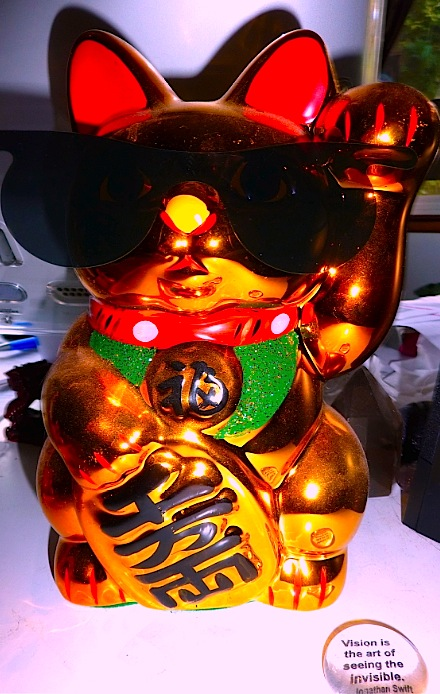



 Explore the dark, rainy underbelly of one of America’s most beautiful but enigmatic cities through brand-new stories by Gigi Little, Justin Hocking, Chris A. Bolton, Jess Walter, Monica Drake, Jamie S. Rich (illustrated by Joelle Jones), Dan DeWeese, Zoe Trope, Luciana Lopez, Karen Karbo, Bill Cameron, Ariel Gore, Floyd Skloot, Megan Kruse, Kimberly Warner-Cohen, and Jonathan Selwood.
Explore the dark, rainy underbelly of one of America’s most beautiful but enigmatic cities through brand-new stories by Gigi Little, Justin Hocking, Chris A. Bolton, Jess Walter, Monica Drake, Jamie S. Rich (illustrated by Joelle Jones), Dan DeWeese, Zoe Trope, Luciana Lopez, Karen Karbo, Bill Cameron, Ariel Gore, Floyd Skloot, Megan Kruse, Kimberly Warner-Cohen, and Jonathan Selwood.




 Some of you may be familiar with Sheriff Joe Arpaio, the star of the reality TV show,
Some of you may be familiar with Sheriff Joe Arpaio, the star of the reality TV show, 




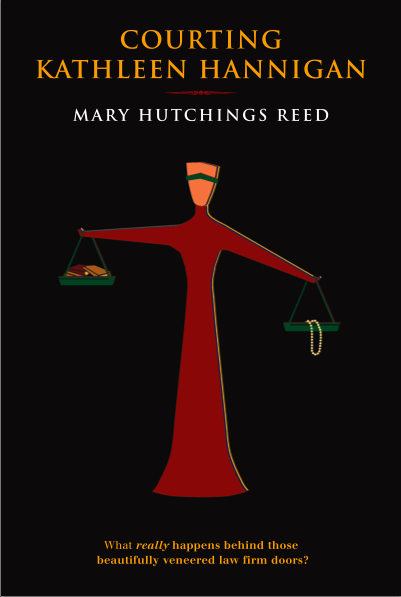


 Ever since turning 40 a few years ago,
Ever since turning 40 a few years ago, 
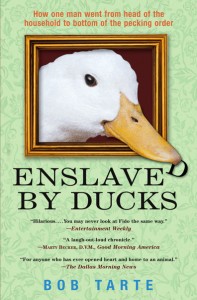 Enslaved By Ducks
Enslaved By Ducks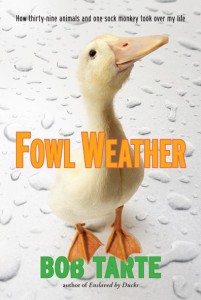 Fowl Weather
Fowl Weather



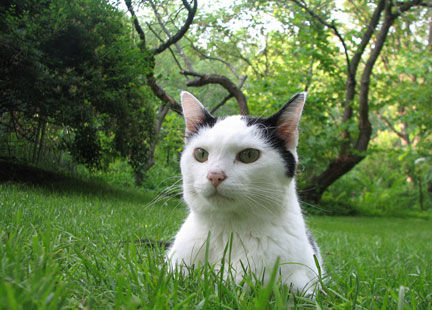



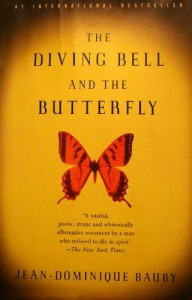 After his massive stroke caused a type of paralysis known as
After his massive stroke caused a type of paralysis known as 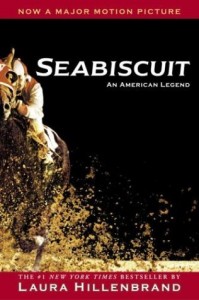
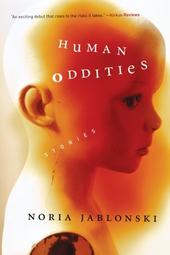 Jablonski’s collection of short stories,
Jablonski’s collection of short stories, 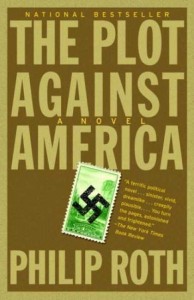 In
In 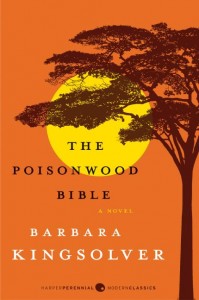 In
In  In
In  And then there’s
And then there’s  Consider the movie
Consider the movie